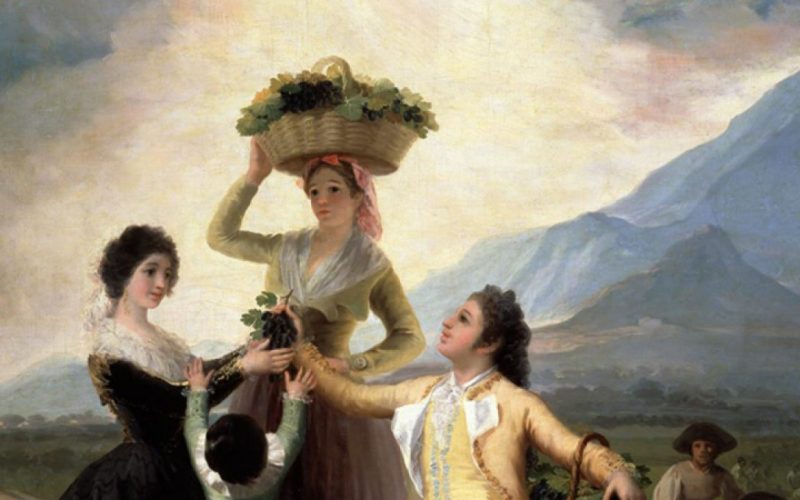The painting that heads this post is one of Francisco de Goya’s most famous paintings, titled The Grape Harvest or The Autumn. The autumnal season is associated with the cult of the grape vine that every year thousands of grape growers celebrate in the middle of a beautiful and colourful landscape. Just as the lady in the painting carries the bunches of grapes, the vine growers collect the fruit of their labour, destined to a changing market, because the wine industry is living a bittersweet moment, marked by the climatic conditions and ups and downs with regards to the distribution, but it promises to emerge stronger and reinvented, as has previously happened throughout history. The wine producers and Winery Owners are people of action. In Spain, the country with the highest wine export rate in the world, the grape harvest of 2017 starts burdened by uncertainties, but, is there anything in life which is certain? Wine is passion and, therefore, the problems are challenges.
Grape-harvest season ahead of time
We used to say that Autumn is the time for grape harvest. In the northern hemisphere the harvesting process is usually carried out during August and October, while in the southern hemisphere it takes place from February until April. Despite these fixed dates, in Spain nearly all of the regions have already started harvesting their vines. The optimum time for picking the grapes depends on the weather conditions, a factor that this year has been advanced by an average of 20 days. The grape harvesting season started in Montilla-Moriles in August, while in La Rioja it started during the first week of September. Many people wonder if we are facing the effects of climate change.
The amount of grapes has decreased
Italy has had one of the lowest harvests over the six latest decades; France also foresees a drop of 18% with respect to last year. Taking into account the estimates of agri-food cooperatives in Spain, a decrease of 10% with a production of 39 million hectolitres is expected. What has caused the grape yield to decrease? The frosts damaged between 40% and a 60% of the production, but as the saying goes “every cloud has a silver lining”, and grape growers have something to be thankful for.
A more intense flavour
There will be less wine, but it will be of better quality, in light of strong climatic contrast that Spain has lived through this last season. From frost to hail, experiencing periods of great heat and drought. It is precisely the extreme climates that encourage a better ripening of the grape, which in addition acquires a marked characteristic flavour for the wine.
Will the price rise?
As a consequence of the lower quantity of wine, companies could also raise their prices, especially the best designations of origin. This is the case of Rioja o Ribera del Duero, which have had blocked prices for several years. When a lot of wine is sold, occasionally of a lower category or bulk wine, there runs the risk that the prices become cheaper. Likewise, is it also expected that exportations will increase specially in those places in which Spain is a world-leader, as it has happened in other campaigns. Without going any further, France has purchased five million hectolitres in similar conditions.
The challenge: to promote the wine culture among the young people
When talking about the fall in wine consumption, the statistics point to a very specific audience as the main problem: the young public. Although brands work to give a more modern image to their products, while simplifying their advertisement messages, it doesn’t seem an effective strategy to reach the future consumers. The most recent attempts to educate in the wine culture: workshops, formations and tastings which invite you to raise your glass. It’s time for grape harvesting and it will continue to be.
